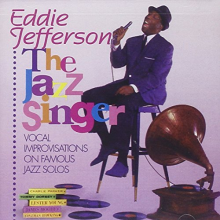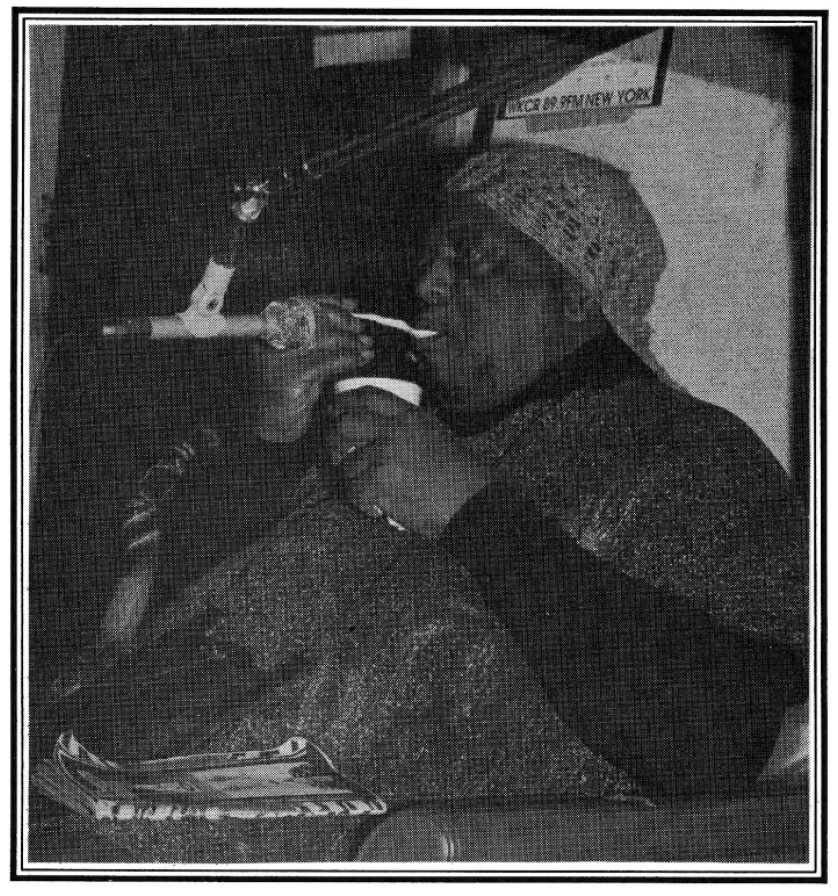
Sunday, February 12, 2017 - 2:00pm to 7:00pm
Sid Gribetz presents a special radio broadcast celebrating the career of vocalist Eddie Jefferson this Sunday, February 12, 2017 from 2:00-7:00 PM EST on for Jazz Profiles.
Eddie Jefferson was the progenitor of the style known as “vocalese”, the writing of lyrics to the improvised solos on jazz instrumental recordings.
Jefferson was born on August 3, 1918 in Pittsburgh. His father was in show business, and Pittsburgh back in the day was a jazz town of vitality and Eddie began professionally as a child in song and dance acts with local friends such as Erroll Garner.
As a young man, Eddie plied his trade as a dancer on the traveling black entertainment circuit, working on the same bills opposite jazz greats such as Coleman Hawkins during the “Body And Soul” years. Along with his dance partner Irv Taylor, Jefferson would while away the time on the road listening to songs on a portable record player, and they would conceive lyrics to go along with the soloists on the records, whether of Prez and Herschel Evans and Buddy Tate with Count Basie, or Chu Berry with Cab Calloway, or popular bands. Jefferson was also influenced by the scat singing and surrealism of Leo Watson, and the arrival of Charlie Parker and bebop gave another perspective.
From this background emerged a new style of jazz singing. Just as the jazz soloist created a new melody in improvising, Jefferson canonized the recorded solos and invested them with fixed life as songs of their own. It is often said that the purpose of the solo is to tell a story. Jefferson’s lyrics interpreted these stories, and also told his own. His experience from the jazz life would be the chronicles he made of “Body and Soul”, “Now’s The Time” or “So What”. Or he would tell his own love stories (“Disappointed”), or spin yarns of fanciful tales turning Lester Young’s version of “It’s Only A Paper Moon” in to a take off of a trip to space on “Come Along With Me”, or reworking “A Night In Tunisia” as an exotic desert fantasy.
The first public breakthrough remains the most famous - in 1949, on a visit to Sweden, James Moody recorded a version of the standard “I’m In The Mood For Love” with a stunning solo. The record took off in the states, and Eddie Jefferson wrote lyrics to that solo that would become “Moody’s Mood For Love” (There I Go, There I Go...). King Pleasure made the first recording of the song, and that immediately put the genre on the map. Annie Ross and others would soon follow. And Eddie Jefferson teamed up with Moody, becoming both the singer with his touring band, and road manager, throughout the 1950's. Meanwhile, groups such as Lambert Hendricks and Ross took up the cudgels, and vocalese became a sensation.
But the popularity of jazz faded in the 1960's and Jefferson was forced to support himself outside of music. With the beginnings of a jazz revival in the 1970's Eddie was back. He teamed with the young saxophone player Richie Cole and toured the country, and Eddie was also a big part of the jazz loft scene in Soho and the Bowery in New York City at places like Bond Street and The Tin Palace.
Unfortunately, this comeback ended when Eddie was senselessly murdered in 1979, while leaving his performance outside Baker’s Keyboard Lounge in Detroit.
But the vocalese tradition is firmly established, in popular groups such as The Manhattan Transfer or New York Voices, great jazz singers of the past, and young vocalists today. And it all started with Eddie Jefferson.
We’ll be presenting all this history and playing his records on the five hour program.
